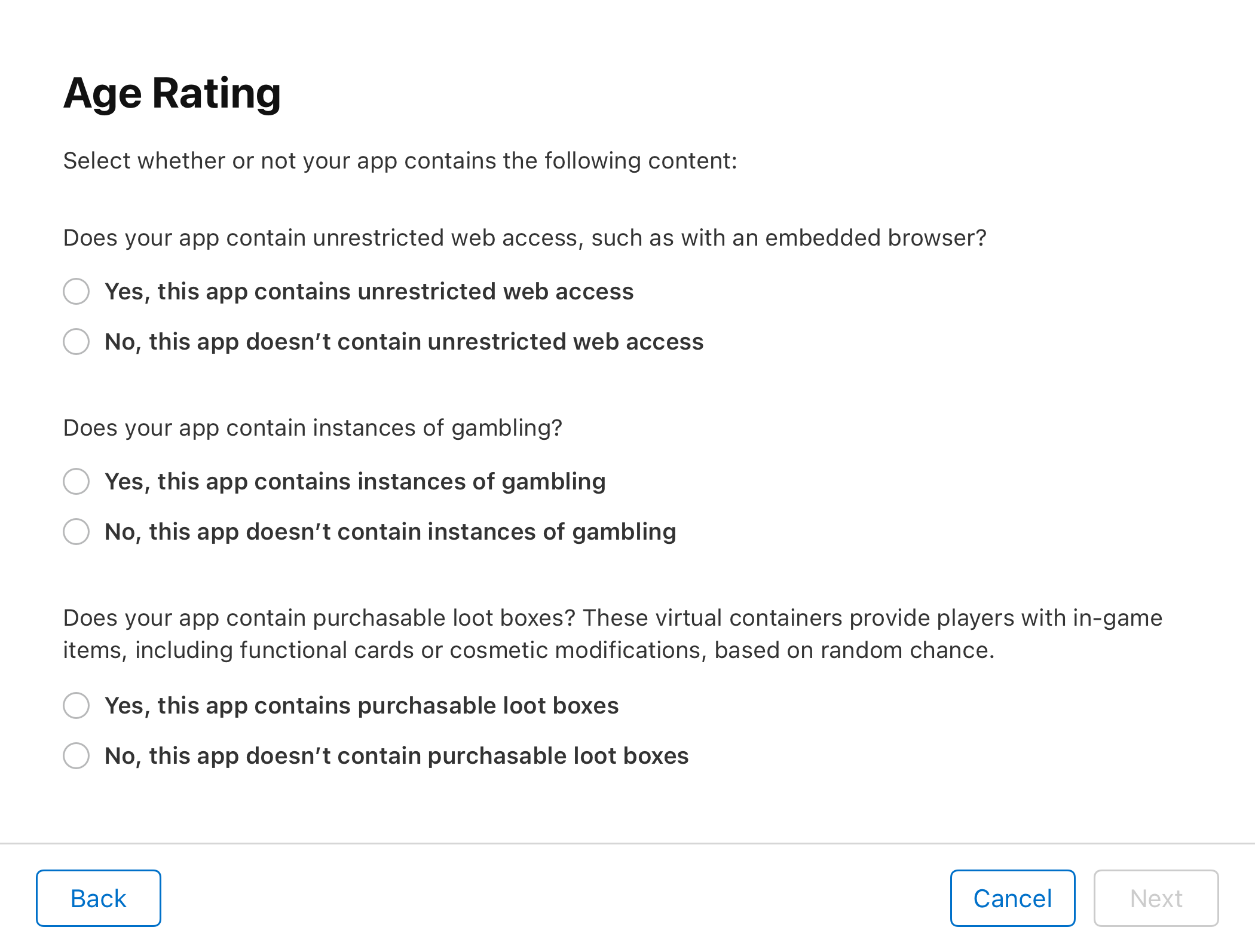
Apple New Age Rating Categories for Apps
Apple has consistently been at the forefront of innovation, not only in terms of hardware and software but also in ensuring a safe and user-friendly environment for its millions of users worldwide. In a recent move that underscores its commitment to user safety and content appropriateness, Apple has announced the implementation of new age rating categories for apps available on the App Store. This significant change is poised to have a far-reaching impact on developers, parents, and users alike. In this article, we will delve into the details of these new age rating categories, explore their implications, and discuss how they align with Apple’s broader strategy for maintaining a secure and trustworthy digital ecosystem.
The Evolution of App Age Ratings
Before we dive into the specifics of Apple’s new age rating categories, it’s essential to understand the context and evolution of app age ratings. The concept of age ratings for digital content is not new. For years, various platforms, including gaming consoles, streaming services, and app stores, have employed age rating systems to help users make informed decisions about the content they consume.
Apple’s App Store has long used age ratings as a way to categorize apps based on their content. These ratings are designed to help users, particularly parents, understand the appropriateness of an app for different age groups. The previous age rating system on the App Store was based on guidelines provided by the International Age Rating Coalition (IARC), which assigned age ratings based on the content of the app, such as violence, sexual content, language, and more.
However, as the digital landscape has evolved, so too have the types of content available on the App Store. With the rise of new technologies, such as augmented reality (AR), virtual reality (VR), and artificial intelligence (AI), the content of apps has become more complex and diverse. This complexity has necessitated a reevaluation of the existing age rating system to ensure that it remains relevant and effective in today’s digital environment.
The New Age Rating Categories
Apple’s new age rating categories represent a significant shift in how apps are classified on the App Store. The updated system introduces more granular age ratings, providing users with a clearer understanding of the content within an app. The new categories are as follows:
- 4+: Apps in this category are suitable for users aged four and above. These apps typically contain no objectionable material and are designed to be safe and appropriate for young children. Examples include educational apps, simple games, and creative tools.
- 9+: Apps in this category are intended for users aged nine and above. They may contain mild or infrequent occurrences of cartoon or fantasy violence, mild language, or suggestive themes. These apps are generally considered appropriate for pre-teens but may require parental guidance.
- 12+: Apps in this category are suitable for users aged twelve and above. They may contain more frequent or intense violence, mild or infrequent sexual content, mild language, or simulated gambling. These apps are designed for teenagers and may require parental discretion.
- 17+: Apps in this category are intended for users aged seventeen and above. They may contain frequent or intense violence, sexual content, strong language, or realistic gambling. These apps are not suitable for minors and are restricted to adult users.
- 18+: This is a new category introduced by Apple, specifically for apps that are intended for adult audiences only. Apps in this category may contain explicit sexual content, graphic violence, or other mature themes. Access to these apps is restricted, and users must verify their age before downloading or purchasing them.
The introduction of the 18+ category is particularly noteworthy, as it reflects Apple’s recognition of the need for a more stringent classification for apps with explicit or mature content. This new category ensures that such apps are not accessible to minors, thereby enhancing the overall safety of the App Store.
Implications for Developers
The implementation of these new age rating categories has several implications for app developers. First and foremost, developers will need to carefully review and reassess the content of their apps to ensure that they are accurately categorized according to the new guidelines. This may involve making adjustments to the app’s content, such as removing or modifying elements that could result in a higher age rating.
Developers will also need to be mindful of the potential impact of these new categories on their app’s visibility and discoverability on the App Store. Apps with higher age ratings may be subject to more stringent restrictions, such as being excluded from certain featured sections or requiring age verification before download. As a result, developers may need to consider how these changes could affect their app’s reach and user base.
Additionally, developers will need to stay informed about any updates or changes to Apple’s age rating guidelines. Apple has stated that it will provide resources and support to help developers navigate the new system, but it will ultimately be the responsibility of developers to ensure that their apps comply with the updated requirements.
Implications for Parents and Users
For parents and users, the new age rating categories offer a more transparent and detailed way to assess the appropriateness of an app. The increased granularity of the ratings allows parents to make more informed decisions about which apps are suitable for their children, based on their age and maturity level.
Parents can also take advantage of Apple’s parental control features, such as Screen Time and Ask to Buy, to further manage and restrict their children’s access to certain apps. These features, combined with the new age rating categories, provide parents with a comprehensive toolkit for ensuring that their children have a safe and age-appropriate experience on the App Store.
For adult users, the introduction of the 18+ category provides a clearer distinction between apps that are intended for mature audiences and those that are suitable for all ages. This distinction helps users make more informed choices about the content they consume and ensures that they are aware of the nature of the apps they are downloading.
Apple’s Broader Strategy for User Safety
The implementation of new age rating categories is just one aspect of Apple’s broader strategy for maintaining a safe and trustworthy digital ecosystem. Over the years, Apple has introduced a range of features and policies designed to protect user privacy, security, and well-being.
For example, Apple’s App Tracking Transparency (ATT) framework requires apps to obtain user consent before tracking their activity across other apps and websites. This feature empowers users to have greater control over their data and how it is used by third-party apps.
Similarly, Apple’s emphasis on privacy is evident in its approach to app reviews and approvals. Every app submitted to the App Store undergoes a rigorous review process to ensure that it meets Apple’s guidelines for quality, security, and content. This process helps to prevent the distribution of malicious or harmful apps on the platform.
The new age rating categories align with Apple’s commitment to user safety by providing a more robust and transparent system for categorizing app content. By doing so, Apple is reinforcing its position as a leader in creating a secure and user-friendly digital environment.
Age Ratings Around the World
It’s important to note that age rating systems for digital content vary across different regions and countries. For example, the Pan-European Game Information (PEGI) system is widely used in Europe to rate video games, while the Entertainment Software Rating Board (ESRB) is the standard in North America. These systems often take into account cultural and societal norms when assigning age ratings to content.
Apple’s new age rating categories are designed to be globally applicable, but they may still need to be adapted or supplemented to comply with local regulations and standards. For instance, certain countries may have specific requirements for apps that contain gambling or other regulated content. Developers will need to be aware of these regional differences and ensure that their apps comply with all relevant laws and guidelines.
The Role of Artificial Intelligence in Age Ratings
As the volume of apps on the App Store continues to grow, manually reviewing and assigning age ratings to each app becomes increasingly challenging. To address this, Apple has been leveraging artificial intelligence (AI) and machine learning (ML) technologies to assist in the app review process.
AI can be used to analyze the content of an app, such as its images, text, and metadata, to determine its appropriate age rating. This automated approach not only speeds up the review process but also helps to ensure consistency and accuracy in age rating assignments.
However, the use of AI in age ratings is not without its challenges. AI algorithms must be carefully trained and validated to avoid biases or errors in rating assignments. Additionally, there may be cases where human review is still necessary to assess the context or nuances of an app’s content.
The Future of Age Ratings
The introduction of new age rating categories is a significant step forward, but it is likely not the final word on the subject. As technology continues to evolve, so too will the types of content available on the App Store. Apple will need to remain vigilant and proactive in updating its age rating system to address emerging trends and challenges.
One area that may require further attention is the rating of apps that incorporate emerging technologies, such as AR and VR. These technologies have the potential to create immersive and interactive experiences that may not fit neatly into existing age rating categories. Apple may need to develop new guidelines or criteria to assess the appropriateness of these types of apps for different age groups.
Another consideration is the increasing prevalence of user-generated content (UGC) in apps. Apps that allow users to create and share content, such as social media platforms or gaming apps, present unique challenges for age rating systems. Apple may need to explore new approaches to ensure that UGC is appropriately moderated and that age ratings accurately reflect the potential content that users may encounter.
Conclusion
Apple’s implementation of new age rating categories for apps on the App Store is a significant development that reflects the company’s ongoing commitment to user safety and content appropriateness. By introducing more granular age ratings, Apple is providing users, particularly parents, with a clearer and more detailed way to assess the suitability of apps for different age groups.
For developers, the new age rating categories present both challenges and opportunities. Developers will need to carefully review and adjust their apps to comply with the updated guidelines, but they will also benefit from a more transparent and consistent rating system.
As the digital landscape continues to evolve, Apple’s age rating system will need to adapt and improve to address new technologies and content types. By staying ahead of these changes, Apple can continue to provide a safe and trustworthy environment for its users, ensuring that the App Store remains a leading platform for app discovery and distribution.


